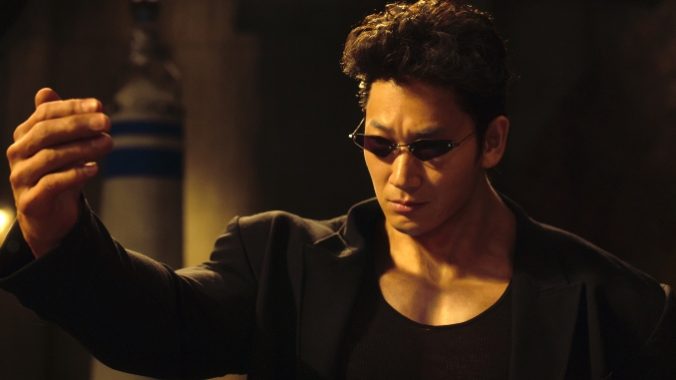Netflix’s Live-Action Yu Yu Hakusho Can’t Conjure the Fighting Spirit of the Original
Photo Courtesy of Netflix
Another day, another Netflix distributed live-action adaptation of a popular anime and or manga. Ok, they’re not quite that commonplace, but the streamer has put out roughly a dozen or so of them in the last few years, and their track record is inconsistent, to say the least. While this year’s One Piece was a delight, we’ve also been forced to endure unbearable whiffs like Cowboy Bebop. But even as these high-profile hits and misses dominate the conversation, the reality is that plenty more of these retellings quietly exist amidst little fanfare, such as the 2018 Bleach movie or the Full Metal Alchemist flicks that I’ve never heard a single person talk about.
The latest in this long line is a live-action take on Yu Yu Hakusho, the best-selling ‘90s battle-shonen by Hunter x Hunter author Yoshihiro Togashi. While this new series doesn’t entirely trample on its source material, much like numerous other unassuming and somewhat cheap-looking adaptations in this style, it fails to meaningfully translate the charm of the original. Held down by its brief five-episode runtime and unconvincing digital effects, it doesn’t justify the jump to this new form.
For those unfamiliar, this story follows Yusuke Urameshi (Takumi Kitamura), a teenage delinquent who immediately bites the dust within the manga’s first few pages. But of course, this isn’t the end for our punchy hero. Shortly after shuffling off this mortal coil, he meets a psychopomp named Botan (Kotone Furukawa) and her boss Koenma (Keita Machida), who bring him back to life as a “Spirit Detective” so he can solve cases that threaten to break the fragile balance between the Human and Demon Worlds. Lucky for Yusuke, who’s more like Goku than Detective Conan, these “mysteries” usually involve using his fists rather than his head, and he’s forced to master his newfound spirit powers to battle an increasingly formidable gauntlet of foes.
This Netflix show’s first major hurdle is that it was only granted a paltry five episodes to adapt a long-running story. Although the original manga is on the “shorter” side of things relative to many other popular Shonen Jump properties, it still comes in at 19 volumes and 112 episodes, meaning there was no hope of packing all this narrative into such a small season. To get around this, this version is mostly a truncated rendition of the beginning of this tale that also incorporates a few details from later on.
At first, this approach was at least marginally successful. Screenwriter Tatsuro Mishima captures important early moments by emphasizing the underlying motivations and sentiments that drive these characters, like how Yusuke’s initial blasé attitude towards his own death is eventually challenged when he sees how his passing has affected those close to him. Similarly, we’re endeared to Yusuke’s frenemy, Kazuma Kuwabara (Shûhei Uesugi), whose failure to protect those closest to him weighs on his conscience and drives him to improve.
However, as the main baddie emerges and the plot begins to speed up, we’re subject to a non-stop procession of battles that feel increasingly emotionally hollow because we’re not left enough room for genuine exchanges. While the original is obviously centered around dudes beating the snot out of each other, the difference here is that there isn’t the same abundance of screentime to slowly endear us to its cast, making some of their later sudden turns land as cheap and artificial.
As for these fights themselves, they’re relatively uneven. On the one hand, many of these scuffles are defined by sharp stunt work and choreography that delivers surprisingly frenetic martial arts action. At one point, as Yusuke partakes in a bare-knuckle brawl with an ogre in a junkyard, he’s forced to contort through the windows of rusting cars and deftly maneuver around incoming projectiles, his movements capturing a sense of physicality and danger. The best of these showdowns provide Wuxia-esque displays of super-powered acrobatics that convey these combatants’ fighting acumen and make a halfway decent argument for why you would want to adapt this story to this form in the first place.